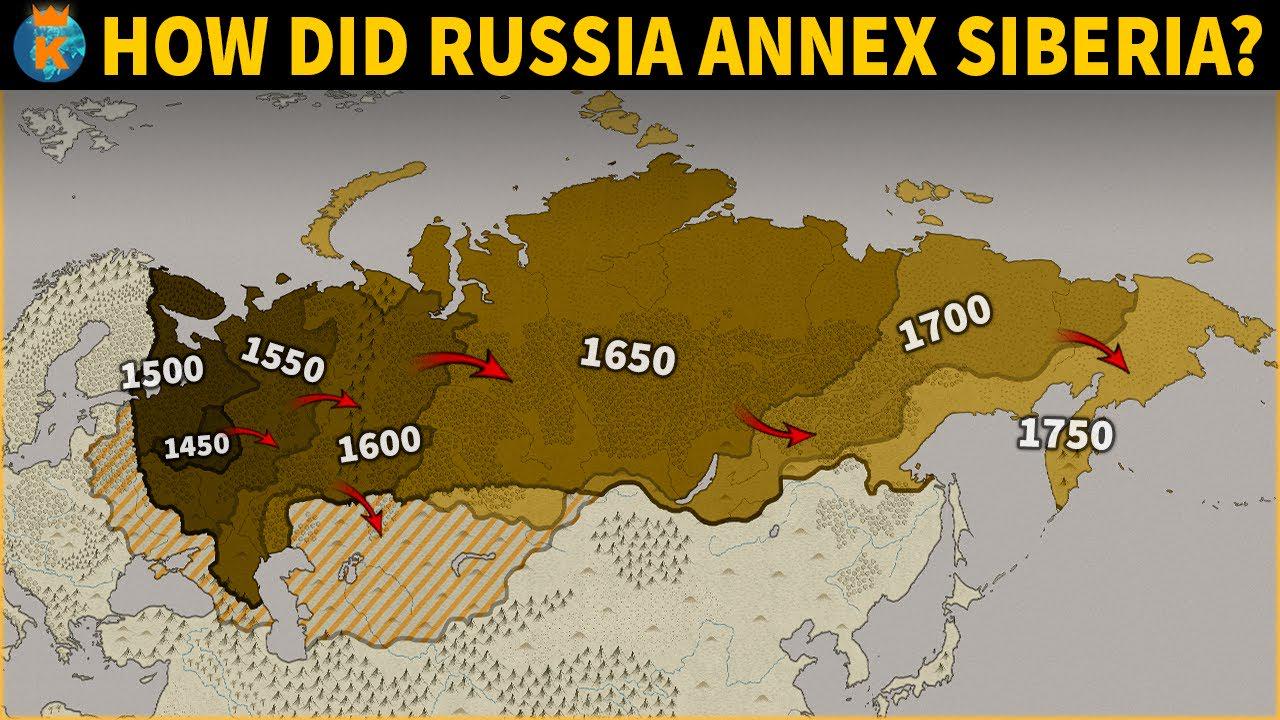Russian Conquest of Siberia Map


David Chen
Data Visualization Specialist
David Chen is an expert in transforming complex geographic datasets into compelling visual narratives. He combines his background in computer science ...
Geographic Analysis
What This Map Shows
The "Russian Conquest of Siberia (1581-1778) Map" illustrates the gradual territorial expansion of the Russian Empire into the vast and diverse region of Siberia over nearly two centuries. This map is not just a representation of borders; it encapsulates a period of significant historical transformation and cultural exchange. From the initial conquests led by explorers like Yermak Timofeyevich to the establishment of Russian settlements, this visualization helps us understand how Russia came to control one of the largest landmasses on Earth.
Deep Dive into the Russian Conquest of Siberia
The conquest of Siberia was marked by a complex interplay of exploration, colonization, and conflict. Interestingly, the Siberian territory was originally inhabited by various indigenous groups, such as the Yakuts, Evenks, and Chukchi. Each of these groups had its own distinct cultures and ways of life, deeply connected to the land and its resources.
The Russian expansion began in the late 16th century, primarily driven by the fur trade. The demand for fur, especially sable, created a lucrative incentive for Russian merchants and the government. Yermak's expedition, which began in 1581, was one of the first major incursions into Siberia, leading to the defeat of the Siberian Khanate. This marked the start of Russia's relentless push eastward.
What's fascinating is that the conquest was not merely a military campaign; it also involved a gradual process of settlement and assimilation. As Russians moved into Siberia, they established forts and trading posts, which laid the groundwork for further expansion. The map shows how these settlements spread across the region, from the Ural Mountains to the Pacific coast.
Throughout the 17th and 18th centuries, the Russian Empire faced various challenges in its attempt to consolidate control over Siberia. Conflicts with indigenous peoples were common, as many resisted encroachment on their lands. The Russian government often employed a mix of diplomacy and force to pacify these groups, leading to a complicated legacy of cultural interactions, intermarriage, and sometimes violent conflicts.
By the end of the 18th century, Siberia had transformed significantly, with Russian settlements numbering in the hundreds. The region became a critical part of the Russian Empire, contributing not only economically through resources and trade but also politically, as it served as a buffer against other powers in the east, such as China and Japan. The vast expanse of Siberia also played a critical role in the expansion of the Russian identity, as the empire sought to integrate these newly acquired territories into its narrative.
Regional Analysis
Diving deeper into the map, we can break down Siberia into several distinct regions, each with its own characteristics and historical significance.
1. **Western Siberia**: This area experienced the earliest Russian incursions, particularly around the Ob River. The fertile land and abundant resources attracted settlers and traders alike. Notably, cities like Tyumen became key administrative centers for the Russian Empire.
2. **Central Siberia**: Here, the Yenisei River played a crucial role in transportation and trade. The city of Krasnoyarsk, founded in 1628, was a vital hub for further exploration into the northern territories.
3. **Eastern Siberia**: This region is characterized by its harsh climate and rugged terrain. The Amur River became a focal point for Russian expansion, leading to tensions with the Qing Dynasty in China. The eventual treaties in the 17th century secured Russian claims to significant portions of this area.
4. **Far East**: The Russian conquest reached its peak in the late 18th century, culminating in the establishment of Russian influence over territories that now comprise parts of modern-day Alaska and the Aleutian Islands. This expansion not only solidified Russia's presence in the Pacific but also set the stage for future interactions with American and European powers.
The map highlights these regions and their unique challenges, showcasing how geography influenced the pace and nature of Russian conquest.
Significance and Impact
The Russian conquest of Siberia is significant for several reasons. Firstly, it shaped the geopolitical landscape of Northeast Asia, establishing Russia as a major power in the region. The vast natural resources of Siberia, including minerals, timber, and oil, have continued to influence global trade and economics.
Moreover, the cultural exchanges initiated during this period have had lasting effects. Today, Siberia is home to a rich tapestry of cultures, blending Russian and indigenous traditions. However, this history also raises questions about the rights and recognition of indigenous peoples, who often struggled to maintain their identities amidst the sweeping changes brought by colonization.
In contemporary discussions, the legacy of the Russian conquest of Siberia continues to resonate, particularly regarding environmental issues and resource management. As Russia navigates its role in a rapidly changing world, the historical context provided by this map serves as a reminder of the complex interactions between land, culture, and power. The future of Siberia, with its vast resources and strategic importance, remains a topic of critical interest in global geopolitics.
Visualization Details
- Published
- October 14, 2025
- Views
- 28
Comments
Loading comments...